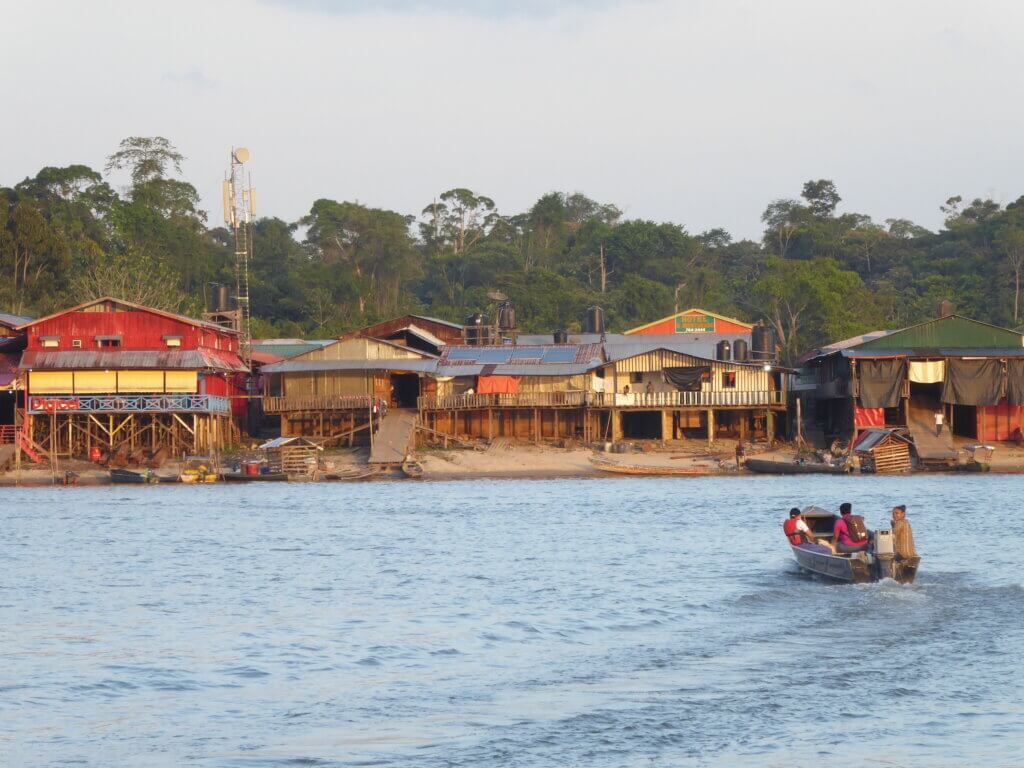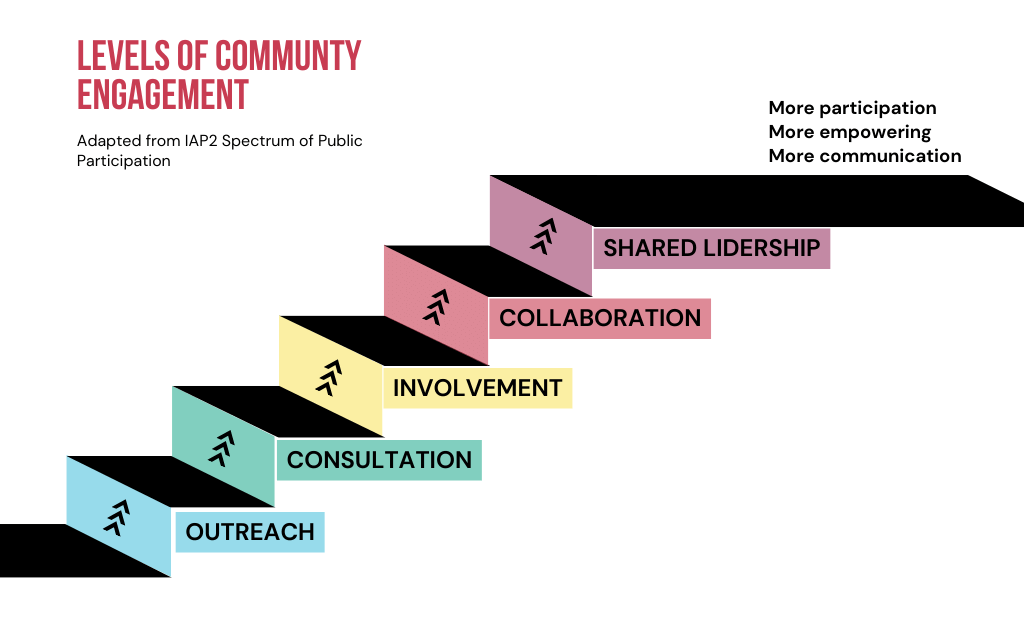Community-based approach
The Curema initiative is a community-based intervention model designed placing the hard-to-reach community at the center. By considering the community’s particularities, the model aims to facilitate access to malaria healthcare and limit the risk of malaria transmission to the general population.
In the Curema project, the community is not only considered as the target population but also as an agent and fundamental resource
Curema mobilizes the community to participate in the project and seeks to strengthen its capacity to manage its health-related needs, leadership, and interorganizational collaboration. This community-based approach facilitates adaptability and responsiveness to a changing and complex context finding appropriate solutions.
The essential elements in the community-based approach of the Curema project are:
- The facilitators provide essential roles in community dialogues, building trust, and fostering community engagement. Prior to the start of the intervention, facilitators participate in bidirectional learning spaces and collaborate in the design of operating tools.
- Cross-cutting evaluation involving mixed-method pre- and post-surveys to identify behaviors and representations of malaria, as well as the wider social determinants of health, and the health priorities perceived by the community and based on biomedical evidence.
- The Curema partner group is composed of a multi-level stakeholder collaboration that includes local, national and international organizations.The diversity of the nature of the actors involved promotes a scientific, strategic, and operational approach that drives the sustainability of actions to combat residual malaria among the gold mining community.
Qualitative component
The qualitative evaluation component brings insights as to whether the Curema intervention is acceptable, accessible, adequately used and produces a beneficial change in the health of the community.
This component is a value-adding part of the overall project and enables:
- To gain knowledge on context elements and social representations on malaria, and on how it impacts their lives. In particular, it deepens in the differential elements and understandings of P. vivax infections and the health care it requires.
- To identify areas for improvement of the Curema intervention prior to implementation, to adapt the strategies to meet quality standards, and to optimize the work of facilitators in the field.
- To map stakeholders and involve them throughout the project.
- To observe and follow-up the evolution of the Curema intervention in relation to expectations, to identify problems, and to propose improvements.
- To understand the rationale for the changes in knowledge and behavior that occurred during and after the intervention and assess the perceptions of success and transferability of the project by the diversity of actors involved.
Community engagement and participation
In low malaria transmission settings, community engagement is even more important in order to create local solutions relevant to multiple actors.
Community engagement is a strategic process that aims to work together with identified groups, building trust and improving health outcomes for long-term sustainability. Community engagement can be understood as a continuum of participation, which ranges from outreach activities to shared decision-making processes.
Community engagement and participation are crucial in the context of malaria elimination, but it can be a challenge to achieve, especially among hard-to-reach groups. Several limits have been encountered in achieving meaningful community participation for shared governance and decision-making processes. These include patterns of high geographical mobility across borders and low levels of health literacy, community establishments in locations that are difficult to reach, occasionally in clandestine and precarious conditions, and environments of political, legal, and social conflict that hinder the involvement of even the most stable community subgroups.
Given the complexities, Curema reflects on the opportunities and pursues a continuous, flexible and adaptive process towards community engagement.
From the outset, the community representatives emphasized the need for information, visibility and proximity of health actions to reach the community and be effective and acceptable. Therefore, a major component of the Curema intervention are the Information Education and Communication (IEC) strategies. To date, a variety of community engagement approaches have been developed to develop and support the launching of the Curema intervention:
- Creation processes involving people from the community, facilitators and scientists to develop IEC videos combining the diverse knowledge and views of the stakeholders.
- Consultative processes for the development of educational materials with a high visual component adapted to the cultural, educational and ethnic characteristics of the community.
- Development of a virtual social network such as Facebook.
- Mutual learning and involvement of facilitators for the adaptation of the intervention during the project design, training and monitoring processes.
- Shared leadership and joint decision-making in both operational and research aspects throughout the project with the non-academic partner, DPAC Fronteira Association.
Upcoming, we will explore the development of other actions with the central contribution of community members addressing malaria concerns and other health issues in the form of activities such as: health fairs, radio programs or songs.
Advocacy and social mobilization
During the project, discussions are held with potential partners and allies from the political, social, scientific-academic, financial and business sectors, who can potentially join and contribute to meeting the specific challenges on the road to malaria elimination.
These meetings are also an opportunity to report on the project’s progress, and to reflect collectively on the sustainability of the most effective malaria elimination actions among hard-to-reach populations, both in the Amazon and internationally.
Further information regarding the project’s contributions and meetings can be found in the news section.

